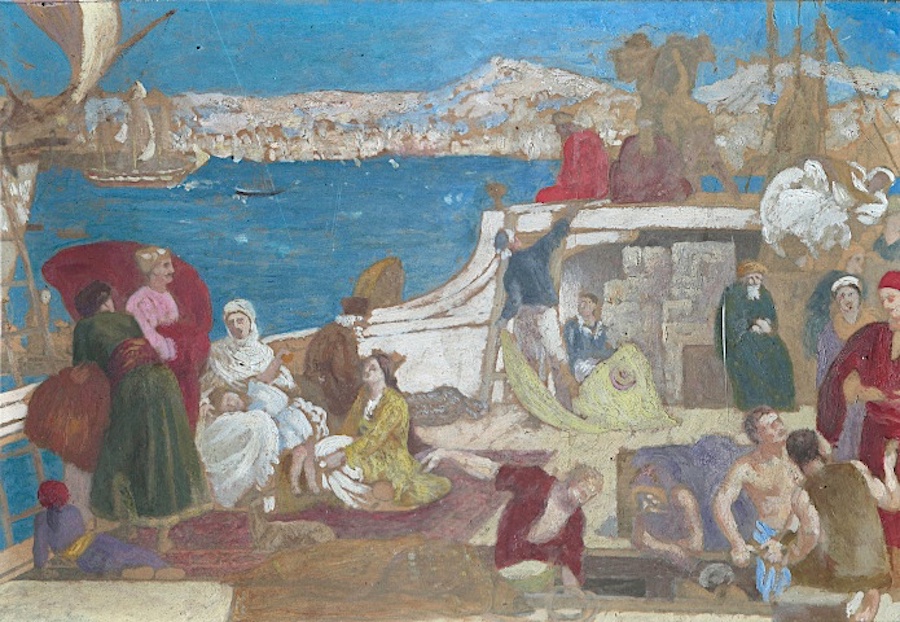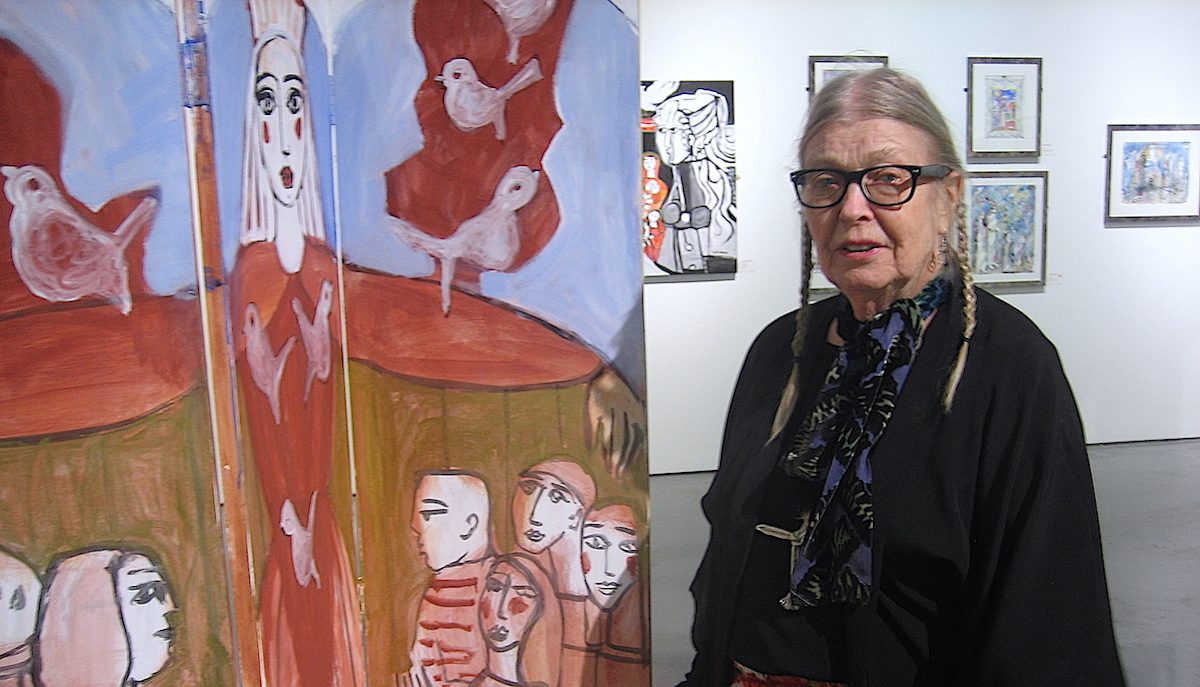Pierre-Cécile Puvis de Chavannes (1824-1898) has turned into a kind of orphan in art historical terms. His career overlapped with all sorts of things that were happening in French art, at a time when Paris was the world centre for artistic creativity. He studied briefly (two weeks only) with Delacroix, was a close friend of Chassériau. And made work that influenced a whole array of major names: Van Gogh, Seurat, Gauguin, Matisse. One of his best-known works, The Poor Fisherman (1881), had a big impact on Blue Period Picasso. He is recognised as one of the chief figures in the Symbolist Movement, with an influence rivalling that of Gustave Moreau, but is felt to have somehow stopped half way. A website devoted to him says, in rather accusing tones that “In his works, life is put on ice, just like his personages and landscapes.” Make of that comment what you will.

In Paris, Puvis de Chavannes remains accessible through his large mural compositions. In London, he is almost non-existent. The National Gallery owns four of his paintings, but only one of these is on view. It hangs in the vestibule as you go in as if those in charge didn’t know quite where to paint it in the historical sequence. It represents The Beheading of Saint John the Baptist and is best described as a kind of Symbolist paraphrase of a Florentine Renaissance altarpiece, a work deliberately not quite of its own time. In fact, you might even see Puvis in this as being the father or grandfather of 21st-century Appropriation. What goes around comes around.
A new exhibition at Michael Werner offers more enlightenment, and an array of good drawings to boot. It shows how carefully constructed his paintings but also gives a clue as to why he has – at least here in Britain – tended to drift out of our collective consciousness. Puvis was a constructor, a builder of paintings, in a way that isn’t fashionable now. The rather creepily subdued colouring characteristic of hid finished works is little present here – most of the drawings are in monochrome, ad one is able to see just what a good draughtsman he was. In an odd way some of them, powerfully drawn fragments of human bodies, make him seem as much Surrealist as he was Symbolist, though one knows this is accidental. Surrealism was after his time. Yet the prophetic link does call one’s attention to the undoubted connection between Symbolism and Surrealism. One, in due course, became the other.
This is a quiet show – you have to study it. But it’s well worth a visit.

Lydia Corbett’s big show at the Mall Galleries – it fills the whole of their large available space – arrives at a particularly crucial moment in the story of Post Modern art.
In the first place we have the continuing debate about Appropriation – now, in art-speak, always spelled with a capital A. This has been going on since the 1980s and implies not merely copying in all its various forms – artists have always done that – but a wholesale takeover, on the part of one artistic creator, of the work of some predecessor. Appropriation, in a contemporary context, often amounts to a claim that making images that are in every respect and without any concealment unoriginal amounts to a new and radical form of artistic originality.
Linked to this, there has been the rise of women’s art. A female artist Appropriating the work of some male predecessor makes a claim on half of her sex. The claim is: “Once you know this is the work of a woman, you have to look at it differently – it acquires a whole series of new meanings.”
Lydia Corbett’s work complicates the debate in a new way. She is better known to art history under the name Sylvette David. Who was Sylvette? The answer is that she, for a brief, intense period, from 1953 to 1954, was the young model who obsessed the ageing Picasso. Unlike his other muses, there was no sexual relationship. Good reason, maybe, why she survived the Minotaur of the Modern Movement so successfully.
You see Sylvette’s image, in pretty much exactly the form in which Picasso created it, in many of these works in this show.
In this case, however, it seems reasonable to speak of Re-Appropriation rather than of simple Appropriation. As Picasso’s likenesses of her make clear, the Sylvette-now-Lydia who obsessed the ageing master for this brief period in the immediately post-war years represented a new generation of free-spirited young women, innocently living life to the full. Sylvette was the archetype of the girls of that time. Which, of course, is why she fascinated the ageing artist. It’s not too much to say that, while he appropriated her, in the years that followed she successfully stole herself back. Which of them was truly responsible for creative theft? Given the circumstances, it is difficult to say.
This big show doesn’t confine itself to self-portraits. It holds up a mirror to what has been a rich and complicated bohemian life – husbands, lovers, children, grandchildren. Making art, rather than just inspiring it, came gradually. Now a lot of her images are religious, which I suspect Picasso might have found strange.
Whatever their source, they often have great charm. I enjoyed looking at them, and, yes, I enjoyed meeting her. She’s still a muse in old age.
PIERRE PUVIS DE CHAVANNES Works on Paper and Paintings 21 September through 10 November 2018 MAYFAIR, LONDON

